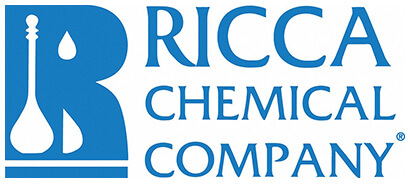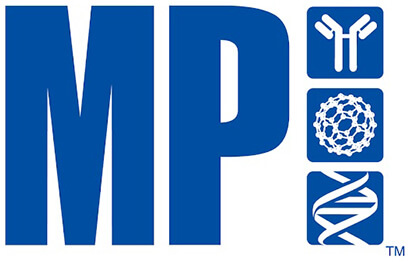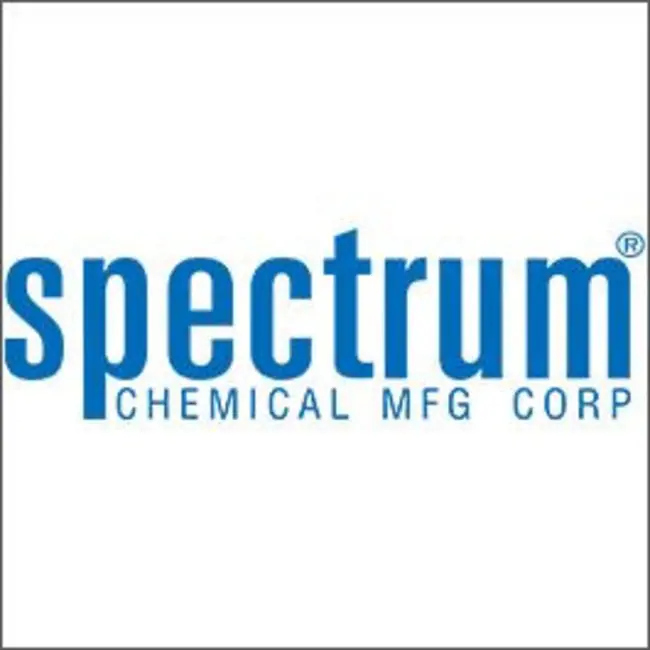Proteins
Showing 1–50 of 9812 results
-
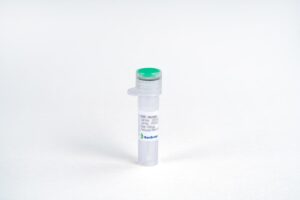
2B4/CD244 Fc Chimera, Human
$1,035.00 Add to cart View Product DetailsCD244 (Cluster of Differentiation 244) is a human protein encoded by the CD244 gene. It is also known as Natural Killer Cell Receptor 2B4. This gene encodes a cell surface receptor expressed on natural killer cells (NK cells) (and some T cells) mediating non-major histocompatibility complex (MHC) restricted killing. The interaction between NK-cell and target cells via this receptor is thought to modulate NK-cell cytolytic activity. Alternatively spliced transcript variants encoding different isoforms have been found for this gene. CD244 can also be expressed on non-lymphocytes such as eosinophils, mast cells and dendritic cells.
-

2B4/CD244 Fc Chimera, Human
$172.50 Add to cart View Product DetailsCD244 (Cluster of Differentiation 244) is a human protein encoded by the CD244 gene. It is also known as Natural Killer Cell Receptor 2B4. This gene encodes a cell surface receptor expressed on natural killer cells (NK cells) (and some T cells) mediating non-major histocompatibility complex (MHC) restricted killing. The interaction between NK-cell and target cells via this receptor is thought to modulate NK-cell cytolytic activity. Alternatively spliced transcript variants encoding different isoforms have been found for this gene. CD244 can also be expressed on non-lymphocytes such as eosinophils, mast cells and dendritic cells.
-

2B4/CD244 Fc Chimera, Human
$103.50 Add to cart View Product DetailsCD244 (Cluster of Differentiation 244) is a human protein encoded by the CD244 gene. It is also known as Natural Killer Cell Receptor 2B4. This gene encodes a cell surface receptor expressed on natural killer cells (NK cells) (and some T cells) mediating non-major histocompatibility complex (MHC) restricted killing. The interaction between NK-cell and target cells via this receptor is thought to modulate NK-cell cytolytic activity. Alternatively spliced transcript variants encoding different isoforms have been found for this gene. CD244 can also be expressed on non-lymphocytes such as eosinophils, mast cells and dendritic cells.
-
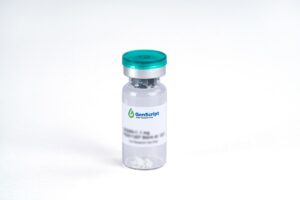
4-1BB (CD137) Fc Chimera, Human
$1,035.00 Add to cart View Product Details4-1BB(CD137) is a member of the tumor necrosis factor (TNF) receptor family. Mature human 4-1BB consists of a 163 amino acid extracellular domain (ECD) with four TNFR cysteine‑rich repeats, a 27 aa transmembrane segment, and a 42 aa cytoplasmic domain; 4-1BB (CD137) is expressed as a disulfide-linked homodimer on various populations of activated T cell including CD4+, CD8+, memory CD8+, NKT, and regulatory T cells as well as on myeloid and mast cell progenitors, dendritic cells, mast cells, and bacterially infected osteoblasts. It binds with high affinity to the transmembrane 4-1BB Ligand/TNFSF9 which is expressed on antigen presenting cells and myeloid progenitor cells. This interaction co stimulates the proliferation, activation, and/or survival of the 4-1BB expressing cell. It can also enhance the activation-induced cell death of repetitively stimulated T cells.
-
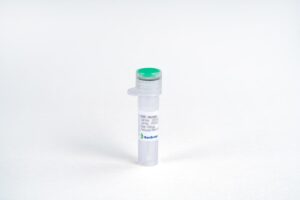
4-1BB (CD137) Fc Chimera, Human
$103.50 Add to cart View Product Details4-1BB(CD137) is a member of the tumor necrosis factor (TNF) receptor family. Mature human 4-1BB consists of a 163 amino acid extracellular domain (ECD) with four TNFR cysteine‑rich repeats, a 27 aa transmembrane segment, and a 42 aa cytoplasmic domain; 4-1BB (CD137) is expressed as a disulfide-linked homodimer on various populations of activated T cell including CD4+, CD8+, memory CD8+, NKT, and regulatory T cells as well as on myeloid and mast cell progenitors, dendritic cells, mast cells, and bacterially infected osteoblasts. It binds with high affinity to the transmembrane 4-1BB Ligand/TNFSF9 which is expressed on antigen presenting cells and myeloid progenitor cells. This interaction co stimulates the proliferation, activation, and/or survival of the 4-1BB expressing cell. It can also enhance the activation-induced cell death of repetitively stimulated T cells.
-

4-1BBL/TNFSF9, His, Human
$301.88 Add to cart View Product DetailsTumor necrosis factor ligand superfamily member 9(4-1BBL) is single-pass type II membrane protein which is a member of the the tumor necrosis factor family. 4 1BBL is a 254 amino acids cytokine that is expressed in brain, placenta, lung, skeletal muscle and kidney. TNFSF9 has been shown to reactivate anergic T lymphocytes in addition to promoting T lymphocyte proliferation. This cytokine may have a role in activation-induced cell death (AICD) and cognate interactions between T-cells and B-cells/macrophages. It has also been shown to be required for the optimal CD8 responses in CD8 T cells, and is thought to be involved in T cell-tumor cell interaction.
-

4-1BBL/TNFSF9, His, Human
$1,811.25 Add to cart View Product DetailsTumor necrosis factor ligand superfamily member 9(4-1BBL) is single-pass type II membrane protein which is a member of the the tumor necrosis factor family. 4 1BBL is a 254 amino acids cytokine that is expressed in brain, placenta, lung, skeletal muscle and kidney. TNFSF9 has been shown to reactivate anergic T lymphocytes in addition to promoting T lymphocyte proliferation. This cytokine may have a role in activation-induced cell death (AICD) and cognate interactions between T-cells and B-cells/macrophages. It has also been shown to be required for the optimal CD8 responses in CD8 T cells, and is thought to be involved in T cell-tumor cell interaction.
-

ACE-2 Fc Chimera, Human (CHO-expressed)
$1,811.25 Add to cart View Product DetailsAngiotensin-Converting Enzyme 2 (ACE-2) is an integral membrane protein and a zinc metalloprotease of the ACE family. The ACE family includes somatic and germinal ACE. ACE-2 cleaves angiotensins I and II as a carboxypeptidase. ACE-2 converts angiotensin I to angiotensin 1-9, and angiotensin II to angiotensin 1-7. ACE 2 is also able to hydrolyze apelin-13 and dynorphin-13 with high efficiency. It has high binding affinity to S-RBD.
-

ACE-2 Fc Chimera, Human (CHO-expressed)
$327.75 Add to cart View Product DetailsAngiotensin-Converting Enzyme 2 (ACE-2) is an integral membrane protein and a zinc metalloprotease of the ACE family. The ACE family includes somatic and germinal ACE. ACE-2 cleaves angiotensins I and II as a carboxypeptidase. ACE-2 converts angiotensin I to angiotensin 1-9, and angiotensin II to angiotensin 1-7. ACE 2 is also able to hydrolyze apelin-13 and dynorphin-13 with high efficiency. It has high binding affinity to S-RBD.
-

Adiponectin, Human(CHO-expressed)
$2,018.25 Add to cart View Product DetailsAdiponectin is an important adipokine involved in the control of fat metabolism and insulin sensitivity. It is synthesized exclusively by adipocytes and secreted into plasma. It antagonizes THF-alpha by negatively regulating its expression. It also inhibits endothelial NF-kappa-B signaling through a cAMP-dependent pathway. Adiponectin can form low molecular weight complexes (LMW), middle molecular weight complexes (MMW) and higher molecular weight complexes (HMW). These bind to various growth factors, such as HBEGF, PDGFB and FGF2, and play a role in cell growth, angiogenesis and tissue remodeling.
-

Adiponectin, Human(CHO-expressed)
$68.14 Add to cart View Product DetailsAdiponectin is an important adipokine involved in the control of fat metabolism and insulin sensitivity. It is synthesized exclusively by adipocytes and secreted into plasma. It antagonizes THF-alpha by negatively regulating its expression. It also inhibits endothelial NF-kappa-B signaling through a cAMP-dependent pathway. Adiponectin can form low molecular weight complexes (LMW), middle molecular weight complexes (MMW) and higher molecular weight complexes (HMW). These bind to various growth factors, such as HBEGF, PDGFB and FGF2, and play a role in cell growth, angiogenesis and tissue remodeling.
-

Adiponectin, Human(CHO-expressed)
$194.06 Add to cart View Product DetailsAdiponectin is an important adipokine involved in the control of fat metabolism and insulin sensitivity. It is synthesized exclusively by adipocytes and secreted into plasma. It antagonizes THF-alpha by negatively regulating its expression. It also inhibits endothelial NF-kappa-B signaling through a cAMP-dependent pathway. Adiponectin can form low molecular weight complexes (LMW), middle molecular weight complexes (MMW) and higher molecular weight complexes (HMW). These bind to various growth factors, such as HBEGF, PDGFB and FGF2, and play a role in cell growth, angiogenesis and tissue remodeling.
-

Adiponectin, Mouse
$2,018.25 Add to cart View Product DetailsAdiponectin is a hormone mainly produced by adipocytes. Adiponectin forms a homotrimer and exists as higher order multimers in vivo. The receptors of Adiponectin are seven transmembrane G protein coupled receptors: Receptor 1 is expressed in skeletal muscle and Receptor 2 in liver. Adiponectin receives a lot of attention because of its anti-diabetic, anti-atherosclerotic, and anti-inflammatory properties. Adiponectin increases the expression of molecules involved in fatty acid transport, combustion of fatty acid, and energy dissipation, and increases insulin sensitivity of the body. Decreased levels of Adiponectin are associated with hypertension, cardiovascular diseases, and metabolic syndromes. Therefore, Adiponectin has promising potential as a pharmacological agent.
-

Adiponectin, Mouse
$68.14 Add to cart View Product DetailsAdiponectin is a hormone mainly produced by adipocytes. Adiponectin forms a homotrimer and exists as higher order multimers in vivo. The receptors of Adiponectin are seven transmembrane G protein coupled receptors: Receptor 1 is expressed in skeletal muscle and Receptor 2 in liver. Adiponectin receives a lot of attention because of its anti-diabetic, anti-atherosclerotic, and anti-inflammatory properties. Adiponectin increases the expression of molecules involved in fatty acid transport, combustion of fatty acid, and energy dissipation, and increases insulin sensitivity of the body. Decreased levels of Adiponectin are associated with hypertension, cardiovascular diseases, and metabolic syndromes. Therefore, Adiponectin has promising potential as a pharmacological agent.
-

Adiponectin, Mouse
$194.06 Add to cart View Product DetailsAdiponectin is a hormone mainly produced by adipocytes. Adiponectin forms a homotrimer and exists as higher order multimers in vivo. The receptors of Adiponectin are seven transmembrane G protein coupled receptors: Receptor 1 is expressed in skeletal muscle and Receptor 2 in liver. Adiponectin receives a lot of attention because of its anti-diabetic, anti-atherosclerotic, and anti-inflammatory properties. Adiponectin increases the expression of molecules involved in fatty acid transport, combustion of fatty acid, and energy dissipation, and increases insulin sensitivity of the body. Decreased levels of Adiponectin are associated with hypertension, cardiovascular diseases, and metabolic syndromes. Therefore, Adiponectin has promising potential as a pharmacological agent.
-

Adiponectin/Acrp30, Human
$2,018.25 Add to cart View Product DetailsAdiponectin is an important adipokine involved in the control of fat metabolism and insulin sensitivity. It is synthesized exclusively by adipocytes and secreted into plasma. It antagonizes THF-alpha by negatively regulating its expression. It also inhibits endothelial NF-kappa-B signaling through a cAMP-dependent pathway. Adiponectin can form low molecular weight complexes (LMW), middle molecular weight complexes (MMW) and higher molecular weight complexes (HMW). These bind to various growth factors, such as HBEGF, PDGFB and FGF2, and play a role in cell growth, angiogenesis and tissue remodeling.
-

Adiponectin/Acrp30, Human
$68.14 Add to cart View Product DetailsAdiponectin is an important adipokine involved in the control of fat metabolism and insulin sensitivity. It is synthesized exclusively by adipocytes and secreted into plasma. It antagonizes THF-alpha by negatively regulating its expression. It also inhibits endothelial NF-kappa-B signaling through a cAMP-dependent pathway. Adiponectin can form low molecular weight complexes (LMW), middle molecular weight complexes (MMW) and higher molecular weight complexes (HMW). These bind to various growth factors, such as HBEGF, PDGFB and FGF2, and play a role in cell growth, angiogenesis and tissue remodeling.
-

Adiponectin/Acrp30, Human
$194.06 Add to cart View Product DetailsAdiponectin is an important adipokine involved in the control of fat metabolism and insulin sensitivity. It is synthesized exclusively by adipocytes and secreted into plasma. It antagonizes THF-alpha by negatively regulating its expression. It also inhibits endothelial NF-kappa-B signaling through a cAMP-dependent pathway. Adiponectin can form low molecular weight complexes (LMW), middle molecular weight complexes (MMW) and higher molecular weight complexes (HMW). These bind to various growth factors, such as HBEGF, PDGFB and FGF2, and play a role in cell growth, angiogenesis and tissue remodeling.
-

AITRL, Mouse
$2,018.25 Add to cart View Product DetailsActivation-Inducible TNF-Related Ligand (AITRL), also known as Glucocorticoid-Induced TNF-Related Ligand (GITRL), belongs to the tumor necrosis factor superfamily (TNFSF). AITRL is a Type II single transmembrane protein and shares low conservation within the extracellular domain with other TNFSF members. AITRL is expressed on macrophages, immature and mature dendritic cells and B cells. Its receptor, Activation-Inducible TNFR family Receptor (AITR), is expressed on T lymphocytes, natural killer (NK) cells, and antigen- presenting cells. After binding by AITRL, AITR can be released. AITR activation increases resistance to tumors and viral infections and is involved in autoimmune and inflammatory processes. In addition, activated AITR increases TCR-induced T cell proliferation and cytokine production and rescues T cells and NK cells from apoptosis.
-

AITRL, Mouse
$68.14 Add to cart View Product DetailsActivation-Inducible TNF-Related Ligand (AITRL), also known as Glucocorticoid-Induced TNF-Related Ligand (GITRL), belongs to the tumor necrosis factor superfamily (TNFSF). AITRL is a Type II single transmembrane protein and shares low conservation within the extracellular domain with other TNFSF members. AITRL is expressed on macrophages, immature and mature dendritic cells and B cells. Its receptor, Activation-Inducible TNFR family Receptor (AITR), is expressed on T lymphocytes, natural killer (NK) cells, and antigen- presenting cells. After binding by AITRL, AITR can be released. AITR activation increases resistance to tumors and viral infections and is involved in autoimmune and inflammatory processes. In addition, activated AITR increases TCR-induced T cell proliferation and cytokine production and rescues T cells and NK cells from apoptosis.
-

AITRL, Mouse
$224.25 Add to cart View Product DetailsActivation-Inducible TNF-Related Ligand (AITRL), also known as Glucocorticoid-Induced TNF-Related Ligand (GITRL), belongs to the tumor necrosis factor superfamily (TNFSF). AITRL is a Type II single transmembrane protein and shares low conservation within the extracellular domain with other TNFSF members. AITRL is expressed on macrophages, immature and mature dendritic cells and B cells. Its receptor, Activation-Inducible TNFR family Receptor (AITR), is expressed on T lymphocytes, natural killer (NK) cells, and antigen- presenting cells. After binding by AITRL, AITR can be released. AITR activation increases resistance to tumors and viral infections and is involved in autoimmune and inflammatory processes. In addition, activated AITR increases TCR-induced T cell proliferation and cytokine production and rescues T cells and NK cells from apoptosis.
-

Amphiregulin, Human
$43.13 Add to cart View Product DetailsAmphiregulin is a member of the EGF family of cytokines, which comprises at least ten proteins including EGF, TGF-α, HB-EGF, Epiregulin, Tomoregulin, Neuregulins and the various heregulins. Through the EGF/TGF-α receptor, it stimulates growth of keratinocytes, epithelial cells and some fibroblasts. Amphiregulin also inhibits the growth of certain carcinoma cell lines. Synthesized as a transmembrane protein, Amphiregulin’s extracellular domain is proteolytically processed to release the mature protein.
-

Amphiregulin, Human
$86.25 Add to cart View Product DetailsAmphiregulin is a member of the EGF family of cytokines, which comprises at least ten proteins including EGF, TGF-α, HB-EGF, Epiregulin, Tomoregulin, Neuregulins and the various heregulins. Through the EGF/TGF-α receptor, it stimulates growth of keratinocytes, epithelial cells and some fibroblasts. Amphiregulin also inhibits the growth of certain carcinoma cell lines. Synthesized as a transmembrane protein, Amphiregulin’s extracellular domain is proteolytically processed to release the mature protein.
-
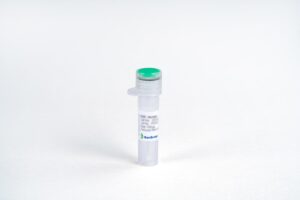
Annexin V, His, Human
$63.83 Add to cart View Product DetailsANXA5, also known as annexin V, is a member of the annexin family of calcium-dependent phospholipid binding proteins which are involved in membrane-related activity along exocytotic and endocytotic pathways. ANXA5 is a phospholipase A2 and protein kinase C inhibitory protein with calcium channel properties. It functions in signal transduction, inflammation, cell growth and differentiation. ANXA5 is an anticoagulant protein that acts as an indirect inhibitor of the thromboplastin-specific complex, which is involved in the blood coagulation cascade. There are at least ten different annexins in the mammalian species. Annexins do not contain signal peptides, yet some annexins (A1, A2 and A5) appear to be secreted in a physiologically regulated fashion.The binding of labeled ANXA5 to phosphatidylserine is commonly used as a marker of apoptosis.
-

Annexin V, His, Human
$142.31 Add to cart View Product DetailsANXA5, also known as annexin V, is a member of the annexin family of calcium-dependent phospholipid binding proteins which are involved in membrane-related activity along exocytotic and endocytotic pathways. ANXA5 is a phospholipase A2 and protein kinase C inhibitory protein with calcium channel properties. It functions in signal transduction, inflammation, cell growth and differentiation. ANXA5 is an anticoagulant protein that acts as an indirect inhibitor of the thromboplastin-specific complex, which is involved in the blood coagulation cascade. There are at least ten different annexins in the mammalian species. Annexins do not contain signal peptides, yet some annexins (A1, A2 and A5) appear to be secreted in a physiologically regulated fashion.The binding of labeled ANXA5 to phosphatidylserine is commonly used as a marker of apoptosis.
-

April, Mouse
$1,177.31 Add to cart View Product DetailsA Proliferation-inducing Ligand (April)) also known as TNSF13A, Tall-2, and TRDL-1, is a member of the TNF ligand (TNFL) superfamily. April is most similar to B-cell activation factor (BAFF) with which it shares 30% sequence identity, compete for two receptors, TACI and BCMA. APRIL is expressed at low levels in lymphoid tissue and is over-expressed by a number of tumors. April has a proliferative effect on both normal and tumor cell lines in vitro and in vivo. APRIL seems to be involved in the regulation of death and proliferation of tumor cells, but there are still contradictory findings regarding its overall biological effects.
-

April, Mouse
$68.14 Add to cart View Product DetailsA Proliferation-inducing Ligand (April)) also known as TNSF13A, Tall-2, and TRDL-1, is a member of the TNF ligand (TNFL) superfamily. April is most similar to B-cell activation factor (BAFF) with which it shares 30% sequence identity, compete for two receptors, TACI and BCMA. APRIL is expressed at low levels in lymphoid tissue and is over-expressed by a number of tumors. April has a proliferative effect on both normal and tumor cell lines in vitro and in vivo. APRIL seems to be involved in the regulation of death and proliferation of tumor cells, but there are still contradictory findings regarding its overall biological effects.
-

April, Mouse
$146.63 Add to cart View Product DetailsA Proliferation-inducing Ligand (April)) also known as TNSF13A, Tall-2, and TRDL-1, is a member of the TNF ligand (TNFL) superfamily. April is most similar to B-cell activation factor (BAFF) with which it shares 30% sequence identity, compete for two receptors, TACI and BCMA. APRIL is expressed at low levels in lymphoid tissue and is over-expressed by a number of tumors. April has a proliferative effect on both normal and tumor cell lines in vitro and in vivo. APRIL seems to be involved in the regulation of death and proliferation of tumor cells, but there are still contradictory findings regarding its overall biological effects.
-

B7-1(CD80) Fc Chimera, Human
$1,035.00 Add to cart View Product DetailsB7-1/CD80 and B7-2/CD86, together with their receptors CD28 and CTLA-4, constitute one of the dominant co-stimulatory pathways that regulate T- and B-cell responses. Although both CTLA-4 and CD28 can bind to the same ligands, CTLA-4 binds to B7-1 and B7-2 with a 20-100 fold higher affinity than CD28 and is involved in the down-regulation of the immune response. Mature human B7-1 consists of a 208 amino acid extracellular domain (ECD) with two immunoglobulin-like domains, a 21 amino acid transmembrane domain, and a 25 amino acid cytoplasmic domain. Both human and mouse B7-1 and B7-2 can bind to either human or mouse CD28 and sCTLA-4. B7-1 is expressed on activated B cells, activated T cells, and macrophages. B7-2 is constitutively expressed on interdigitating dendritic cells, Langerhans cells, peripheral blood dendritic cells, memory B cells, and germinal center B cells.
-

B7-1(CD80) Fc Chimera, Human
$237.19 Add to cart View Product DetailsB7-1/CD80 and B7-2/CD86, together with their receptors CD28 and CTLA-4, constitute one of the dominant co-stimulatory pathways that regulate T- and B-cell responses. Although both CTLA-4 and CD28 can bind to the same ligands, CTLA-4 binds to B7-1 and B7-2 with a 20-100 fold higher affinity than CD28 and is involved in the down-regulation of the immune response. Mature human B7-1 consists of a 208 amino acid extracellular domain (ECD) with two immunoglobulin-like domains, a 21 amino acid transmembrane domain, and a 25 amino acid cytoplasmic domain. Both human and mouse B7-1 and B7-2 can bind to either human or mouse CD28 and sCTLA-4. B7-1 is expressed on activated B cells, activated T cells, and macrophages. B7-2 is constitutively expressed on interdigitating dendritic cells, Langerhans cells, peripheral blood dendritic cells, memory B cells, and germinal center B cells.
-

B7-1(CD80) Fc Chimera, Human
$137.14 Add to cart View Product DetailsB7-1/CD80 and B7-2/CD86, together with their receptors CD28 and CTLA-4, constitute one of the dominant co-stimulatory pathways that regulate T- and B-cell responses. Although both CTLA-4 and CD28 can bind to the same ligands, CTLA-4 binds to B7-1 and B7-2 with a 20-100 fold higher affinity than CD28 and is involved in the down-regulation of the immune response. Mature human B7-1 consists of a 208 amino acid extracellular domain (ECD) with two immunoglobulin-like domains, a 21 amino acid transmembrane domain, and a 25 amino acid cytoplasmic domain. Both human and mouse B7-1 and B7-2 can bind to either human or mouse CD28 and sCTLA-4. B7-1 is expressed on activated B cells, activated T cells, and macrophages. B7-2 is constitutively expressed on interdigitating dendritic cells, Langerhans cells, peripheral blood dendritic cells, memory B cells, and germinal center B cells.
-
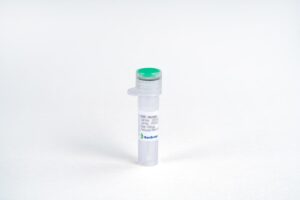
B7-2/CD86 Fc Chimera, Human
$1,035.00 Add to cart View Product DetailsB7-1 and B7-2 are homologous costimulatory ligands expressed on the surface of antigen presenting cells (APCs), both are type 1 transmembrane proteins with a membrane distal IgV and a membrane proximal IgC domain. They share ~25% sequence homology and interact with the same receptors, CD28 and CTLA-4.Binding of these molecules to the T cell costimulatory receptors, CD28 and CTLA-4, is essential for the activation and regulation of T cell immunity. T cell activation requires engagement of the T cell receptor (TCR) with the peptide–MHC complex presented on the cell surface of antigen presenting cells (APCs). In addition to this antigen-specific interaction, a second interaction involving costimulatory receptors (CD28, ICOS) on T cells and their respective ligands (B7-1/B7-2, ICOS-L) on APCs is required for optimal T cell activation. B7-1 and B7-2 may also function to deliver signal into dendritic cells. While B7-1 favors binding to CTLA-4, B7-2 shows a preference for CD28.
-

B7-2/CD86 Fc Chimera, Human
$215.63 Add to cart View Product DetailsB7-1 and B7-2 are homologous costimulatory ligands expressed on the surface of antigen presenting cells (APCs), both are type 1 transmembrane proteins with a membrane distal IgV and a membrane proximal IgC domain. They share ~25% sequence homology and interact with the same receptors, CD28 and CTLA-4.Binding of these molecules to the T cell costimulatory receptors, CD28 and CTLA-4, is essential for the activation and regulation of T cell immunity. T cell activation requires engagement of the T cell receptor (TCR) with the peptide–MHC complex presented on the cell surface of antigen presenting cells (APCs). In addition to this antigen-specific interaction, a second interaction involving costimulatory receptors (CD28, ICOS) on T cells and their respective ligands (B7-1/B7-2, ICOS-L) on APCs is required for optimal T cell activation. B7-1 and B7-2 may also function to deliver signal into dendritic cells. While B7-1 favors binding to CTLA-4, B7-2 shows a preference for CD28.
-

B7-H3 Fc Chimera, Human
$1,035.00 Add to cart View Product DetailsHuman B7 homolog 3 (B7-H3), a member of the immunoglobulin superfamily, is also known CD276, which contains two Ig-like C2-type (immunoglobulin-like) domains and two Ig-like V-type (immunoglobulin-like) domains. B7-H3 may participate in the regulation of T-cell-mediated immune response. B7-H3 also plays a protective role in tumor cells by inhibiting natural-killer mediated cell lysis as well as a role of marker for detection of neuroblastoma cells. Furthermore, B7-H3 is involved in the development of acute and chronic transplant rejection and in the regulation of lymphocytic activity at mucosal surfaces. Human B7-H3 does not bind any known members of the CD28 family of immunoreceptor. However, B7-H3 has been shown to bind an unidentified counter-receptor on activated T cells to co-stimulate the proliferation of CD4+ or CD8+ T cells. B7-H3 has also been found to enhance the induction of primary cytotoxic T lymphocytes and stimulate IFN-gamma production.
-

B7-H3 Fc Chimera, Human
$237.19 Add to cart View Product DetailsHuman B7 homolog 3 (B7-H3), a member of the immunoglobulin superfamily, is also known CD276, which contains two Ig-like C2-type (immunoglobulin-like) domains and two Ig-like V-type (immunoglobulin-like) domains. B7-H3 may participate in the regulation of T-cell-mediated immune response. B7-H3 also plays a protective role in tumor cells by inhibiting natural-killer mediated cell lysis as well as a role of marker for detection of neuroblastoma cells. Furthermore, B7-H3 is involved in the development of acute and chronic transplant rejection and in the regulation of lymphocytic activity at mucosal surfaces. Human B7-H3 does not bind any known members of the CD28 family of immunoreceptor. However, B7-H3 has been shown to bind an unidentified counter-receptor on activated T cells to co-stimulate the proliferation of CD4+ or CD8+ T cells. B7-H3 has also been found to enhance the induction of primary cytotoxic T lymphocytes and stimulate IFN-gamma production.
-

B7-H3, His, Human
$1,293.75 Add to cart View Product DetailsHuman B7 homolog 3 (B7-H3), a member of the immunoglobulin superfamily, is also known CD276, which contains two Ig-like C2-type (immunoglobulin-like) domains and two Ig-like V-type (immunoglobulin-like) domains. B7-H3 may participate in the regulation of T-cell-mediated immune response. B7-H3 also plays a protective role in tumor cells by inhibiting natural-killer mediated cell lysis as well as a role of marker for detection of neuroblastoma cells. Furthermore, B7-H3 is involved in the development of acute and chronic transplant rejection and in the regulation of lymphocytic activity at mucosal surfaces. Human B7-H3 does not bind any known members of the CD28 family of immunoreceptor. However, B7-H3 has been shown to bind an unidentified counter-receptor on activated T cells to costimulate the proliferation of CD4+ or CD8+ T cells. B7-H3 has also been found to enhance the induction of primary cytotoxic T lymphocytes and stimulate IFN-gamma production.
-

B7-H3, His, Human
$340.69 Add to cart View Product DetailsHuman B7 homolog 3 (B7-H3), a member of the immunoglobulin superfamily, is also known CD276, which contains two Ig-like C2-type (immunoglobulin-like) domains and two Ig-like V-type (immunoglobulin-like) domains. B7-H3 may participate in the regulation of T-cell-mediated immune response. B7-H3 also plays a protective role in tumor cells by inhibiting natural-killer mediated cell lysis as well as a role of marker for detection of neuroblastoma cells. Furthermore, B7-H3 is involved in the development of acute and chronic transplant rejection and in the regulation of lymphocytic activity at mucosal surfaces. Human B7-H3 does not bind any known members of the CD28 family of immunoreceptor. However, B7-H3 has been shown to bind an unidentified counter-receptor on activated T cells to costimulate the proliferation of CD4+ or CD8+ T cells. B7-H3 has also been found to enhance the induction of primary cytotoxic T lymphocytes and stimulate IFN-gamma production.
-

BAFF-R, Human
$1,086.75 Add to cart View Product DetailsBAFF Receptor (BAFF-R), a member of the TNFR superfamily, is highly expressed in spleen, lymph node, and resting B cells and to some extent in activated B cells, resting CD4+ cells and peripheral blood leukocytes. BAFF-R is a type III transmembrane protein that binds with high specificity to BAFF (TNFSF13B). BAFF-R/BAFF signaling plays a critical role in B cell survival and maturation.
-

BAFF-R, Human
$163.88 Add to cart View Product DetailsBAFF Receptor (BAFF-R), a member of the TNFR superfamily, is highly expressed in spleen, lymph node, and resting B cells and to some extent in activated B cells, resting CD4+ cells and peripheral blood leukocytes. BAFF-R is a type III transmembrane protein that binds with high specificity to BAFF (TNFSF13B). BAFF-R/BAFF signaling plays a critical role in B cell survival and maturation.
-

BAFF, Human
$1,651.69 Add to cart View Product DetailsB-cell activating factor, also known as BAFF, TALL-1, TNAK, and zTNF4, is a member of theTNF ligand superfamily designated TNFSF13B. Produced by macrophages, dendritic cells, and T lymphocytes, BAFF promotes the survival of B cells and is essential for B cell maturation. BAFF binds to three TNF receptor superfamily members: B-cell maturation antigen (BCMA/TNFRSF17), transmembrane activator and calcium-modulator and cyclophilin ligand interactor (TACI/TNFRSF13B) and BAFF receptor (BAFF R/BR3/TNFRSF 13C). These receptors are type III transmembrane proteins lacking a signal peptide. Whereas TACI and BCMA bind BAFF and another TNF superfamily ligand, APRIL(a proliferation-inducing ligand), BAFF R selectively binds BAFF. The BAFF R extracellular domain lacks the TNF receptor canonical cysteine-rich domain (CRD) and contains only a partial CRD with four cysteine residues. Human and mouse BAFF R share 56% aa sequence identity. BAFF R is highly expressed in spleen, lymph node and resting B cells. It is also expressed at lower levels in activated B cell, resting CD4+ T cells, thymus and peripheral blood leukocytes.
-

BAFF, Human
$51.75 Add to cart View Product DetailsB-cell activating factor, also known as BAFF, TALL-1, TNAK, and zTNF4, is a member of theTNF ligand superfamily designated TNFSF13B. Produced by macrophages, dendritic cells, and T lymphocytes, BAFF promotes the survival of B cells and is essential for B cell maturation. BAFF binds to three TNF receptor superfamily members: B-cell maturation antigen (BCMA/TNFRSF17), transmembrane activator and calcium-modulator and cyclophilin ligand interactor (TACI/TNFRSF13B) and BAFF receptor (BAFF R/BR3/TNFRSF 13C). These receptors are type III transmembrane proteins lacking a signal peptide. Whereas TACI and BCMA bind BAFF and another TNF superfamily ligand, APRIL(a proliferation-inducing ligand), BAFF R selectively binds BAFF. The BAFF R extracellular domain lacks the TNF receptor canonical cysteine-rich domain (CRD) and contains only a partial CRD with four cysteine residues. Human and mouse BAFF R share 56% aa sequence identity. BAFF R is highly expressed in spleen, lymph node and resting B cells. It is also expressed at lower levels in activated B cell, resting CD4+ T cells, thymus and peripheral blood leukocytes.
-

BAFF, Human
$194.06 Add to cart View Product DetailsB-cell activating factor, also known as BAFF, TALL-1, TNAK, and zTNF4, is a member of theTNF ligand superfamily designated TNFSF13B. Produced by macrophages, dendritic cells, and T lymphocytes, BAFF promotes the survival of B cells and is essential for B cell maturation. BAFF binds to three TNF receptor superfamily members: B-cell maturation antigen (BCMA/TNFRSF17), transmembrane activator and calcium-modulator and cyclophilin ligand interactor (TACI/TNFRSF13B) and BAFF receptor (BAFF R/BR3/TNFRSF 13C). These receptors are type III transmembrane proteins lacking a signal peptide. Whereas TACI and BCMA bind BAFF and another TNF superfamily ligand, APRIL(a proliferation-inducing ligand), BAFF R selectively binds BAFF. The BAFF R extracellular domain lacks the TNF receptor canonical cysteine-rich domain (CRD) and contains only a partial CRD with four cysteine residues. Human and mouse BAFF R share 56% aa sequence identity. BAFF R is highly expressed in spleen, lymph node and resting B cells. It is also expressed at lower levels in activated B cell, resting CD4+ T cells, thymus and peripheral blood leukocytes.
-

BCA-1/CXCL13, Human
$2,018.25 Add to cart View Product DetailsCXCL13, also known as B-lymphocyte chemoattractant (BLC), is a CXC chemokine that is constitutively expressed in secondary lymphoid organs. BCA-1 cDNA encodes a protein of 109 amino acid residues with a leader sequence of 22 residues. Mature human BCA-1 shares 64% amino acid sequence similarity with the mouse protein and 23 – 34% amino acid sequence identity with other known CXC chemokines. Recombinant or chemically synthesized BCA-1 is a potent chemoattractant for B lymphocytes but not T lymphocytes, monocytes or neutrophils. BLR1, a G protein-coupled receptor originally isolated from Burkitt’s lymphoma cells, has now been shown to be the specific receptor for BCA-1. Among cells of the hematopoietic lineages, the expression of BLR1, now designated CXCR5, is restricted to B lymphocytes and a subpopulation of T helper memory cells. Mice lacking BLR1 have been shown to lack inguinal lymph nodes. These mice were also found to have impaired development of Peyer’s patches and defective formation of primary follicles and germinal centers in the spleen as a result of the inability of B lymphocytes to migrate into B cell areas.
-

BCA-1/CXCL13, Human
$155.25 Add to cart View Product DetailsCXCL13, also known as B-lymphocyte chemoattractant (BLC), is a CXC chemokine that is constitutively expressed in secondary lymphoid organs. BCA-1 cDNA encodes a protein of 109 amino acid residues with a leader sequence of 22 residues. Mature human BCA-1 shares 64% amino acid sequence similarity with the mouse protein and 23 – 34% amino acid sequence identity with other known CXC chemokines. Recombinant or chemically synthesized BCA-1 is a potent chemoattractant for B lymphocytes but not T lymphocytes, monocytes or neutrophils. BLR1, a G protein-coupled receptor originally isolated from Burkitt’s lymphoma cells, has now been shown to be the specific receptor for BCA-1. Among cells of the hematopoietic lineages, the expression of BLR1, now designated CXCR5, is restricted to B lymphocytes and a subpopulation of T helper memory cells. Mice lacking BLR1 have been shown to lack inguinal lymph nodes. These mice were also found to have impaired development of Peyer’s patches and defective formation of primary follicles and germinal centers in the spleen as a result of the inability of B lymphocytes to migrate into B cell areas.
-

BD-1, Human
$2,238.19 Add to cart View Product DetailsDefensins (alpha and beta) are cationic peptides with a broad spectrum of antimicrobial activity that comprise an important arm of the innate immune system. The α-defensins are distinguished from the β-defensins by the pairing of their three disulfide bonds. To date, four human β-defensins have been identified; BD-1, BD-2, BD-3 and BD-4. β-defensins are expressed on some leukocytes and at epithelial surfaces. In addition to their direct antimicrobial activities, they are chemoattractant towards immature dendritic cells and memory T cells. The β-defensin proteins are expressed as the C-terminal portion of precursors and are released by proteolytic cleavage of a signal sequence and, in the case of BD-1 (36 a.a.), a propeptide region. β-defensins contain a six-cysteine motif that forms three intra-molecular disulfide bonds. β-Defensins are 3-5 kDa peptides ranging in size from 33-47 amino acid residues.
-

BD-1, Human
$142.31 Add to cart View Product DetailsDefensins (alpha and beta) are cationic peptides with a broad spectrum of antimicrobial activity that comprise an important arm of the innate immune system. The α-defensins are distinguished from the β-defensins by the pairing of their three disulfide bonds. To date, four human β-defensins have been identified; BD-1, BD-2, BD-3 and BD-4. β-defensins are expressed on some leukocytes and at epithelial surfaces. In addition to their direct antimicrobial activities, they are chemoattractant towards immature dendritic cells and memory T cells. The β-defensin proteins are expressed as the C-terminal portion of precursors and are released by proteolytic cleavage of a signal sequence and, in the case of BD-1 (36 a.a.), a propeptide region. β-defensins contain a six-cysteine motif that forms three intra-molecular disulfide bonds. β-Defensins are 3-5 kDa peptides ranging in size from 33-47 amino acid residues.
-

BD-2, Human
$2,018.25 Add to cart View Product DetailsDefensins (alpha and beta) are cationic peptides with a broad spectrum of antimicrobial activity that comprise an important arm of the innate immune system. The α-defensins are distinguished from the β-defensins by the pairing of their three disulfide bonds. To date, four human β-defensins have been identified; BD-1, BD-2, BD-3 and BD-4. β-defensins are expressed on some leukocytes and at epithelial surfaces. In addition to their direct antimicrobial activities, they are chemoattractant towards immature dendritic cells and memory T cells. The β-defensin proteins are expressed as the C-terminal portion of precursors and are released by proteolytic cleavage of a signal sequence and, in the case of BD-1 (36 a.a.), a propeptide region. β-defensins contain a six-cysteine motif that forms three intra-molecular disulfide bonds. β-Defensins are 3-5 kDa peptides ranging in size from 33-47 amino acid residues.
-

BD-2, Human
$159.56 Add to cart View Product DetailsDefensins (alpha and beta) are cationic peptides with a broad spectrum of antimicrobial activity that comprise an important arm of the innate immune system. The α-defensins are distinguished from the β-defensins by the pairing of their three disulfide bonds. To date, four human β-defensins have been identified; BD-1, BD-2, BD-3 and BD-4. β-defensins are expressed on some leukocytes and at epithelial surfaces. In addition to their direct antimicrobial activities, they are chemoattractant towards immature dendritic cells and memory T cells. The β-defensin proteins are expressed as the C-terminal portion of precursors and are released by proteolytic cleavage of a signal sequence and, in the case of BD-1 (36 a.a.), a propeptide region. β-defensins contain a six-cysteine motif that forms three intra-molecular disulfide bonds. β-Defensins are 3-5 kDa peptides ranging in size from 33-47 amino acid residues.
-

BD-3, Human
$2,190.75 Add to cart View Product DetailsDefensins (alpha and beta) are cationic peptides with a broad spectrum of antimicrobial activity that comprise an important arm of the innate immune system. The α-defensins are distinguished from the β-defensins by the pairing of their three disulfide bonds. To date, four human β-defensins have been identified; BD-1, BD-2, BD-3 and BD-4. β-defensins are expressed on some leukocytes and at epithelial surfaces. In addition to their direct antimicrobial activities, they are chemoattractant towards immature dendritic cells and memory T cells. The β-defensin proteins are expressed as the C-terminal portion of precursors and are released by proteolytic cleavage of a signal sequence and, in the case of BD-1 (36 a.a.), a propeptide region. β-defensins contain a six-cysteine motif that forms three intra-molecular disulfide bonds. β-Defensins are 3-5 kDa peptides ranging in size from 33-47 amino acid residues.
-

BD-3, Human
$163.88 Add to cart View Product DetailsDefensins (alpha and beta) are cationic peptides with a broad spectrum of antimicrobial activity that comprise an important arm of the innate immune system. The α-defensins are distinguished from the β-defensins by the pairing of their three disulfide bonds. To date, four human β-defensins have been identified; BD-1, BD-2, BD-3 and BD-4. β-defensins are expressed on some leukocytes and at epithelial surfaces. In addition to their direct antimicrobial activities, they are chemoattractant towards immature dendritic cells and memory T cells. The β-defensin proteins are expressed as the C-terminal portion of precursors and are released by proteolytic cleavage of a signal sequence and, in the case of BD-1 (36 a.a.), a propeptide region. β-defensins contain a six-cysteine motif that forms three intra-molecular disulfide bonds. β-Defensins are 3-5 kDa peptides ranging in size from 33-47 amino acid residues.


